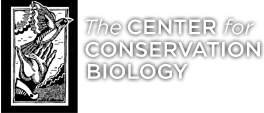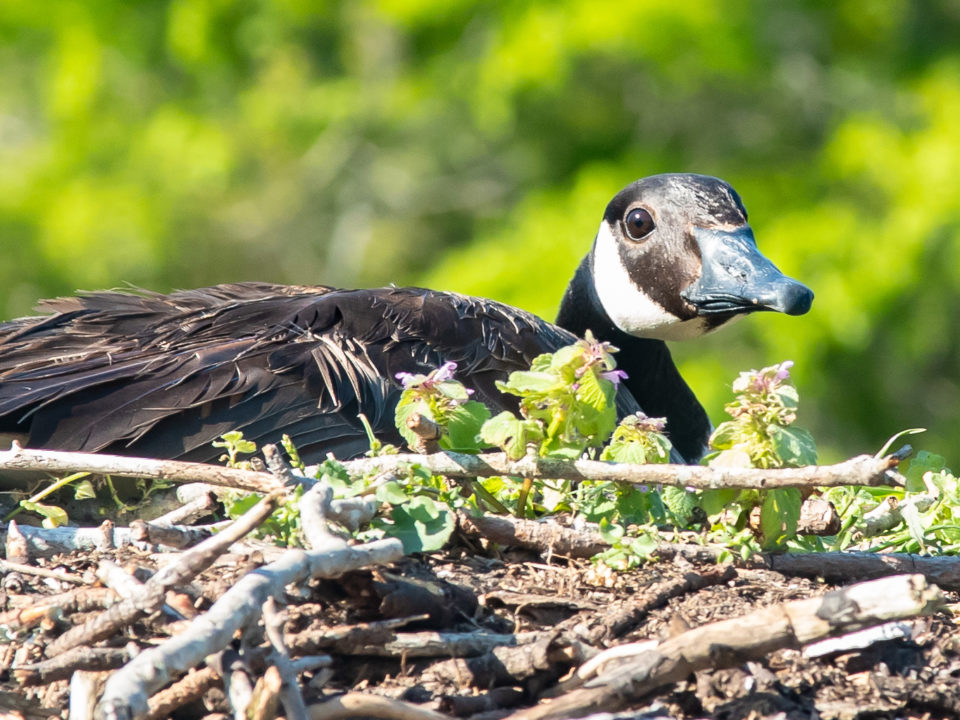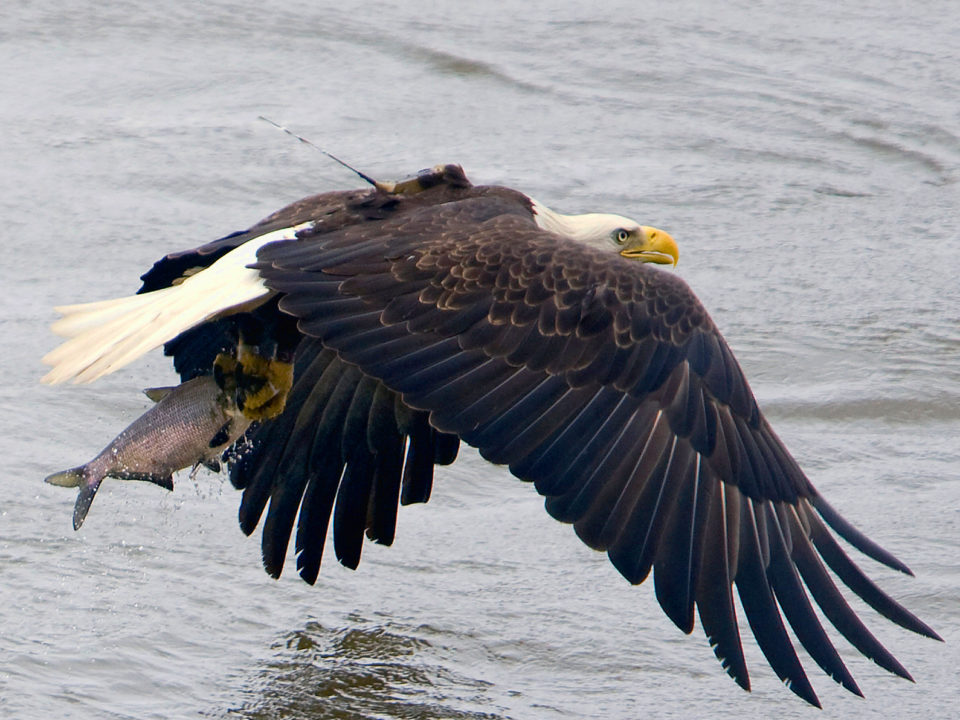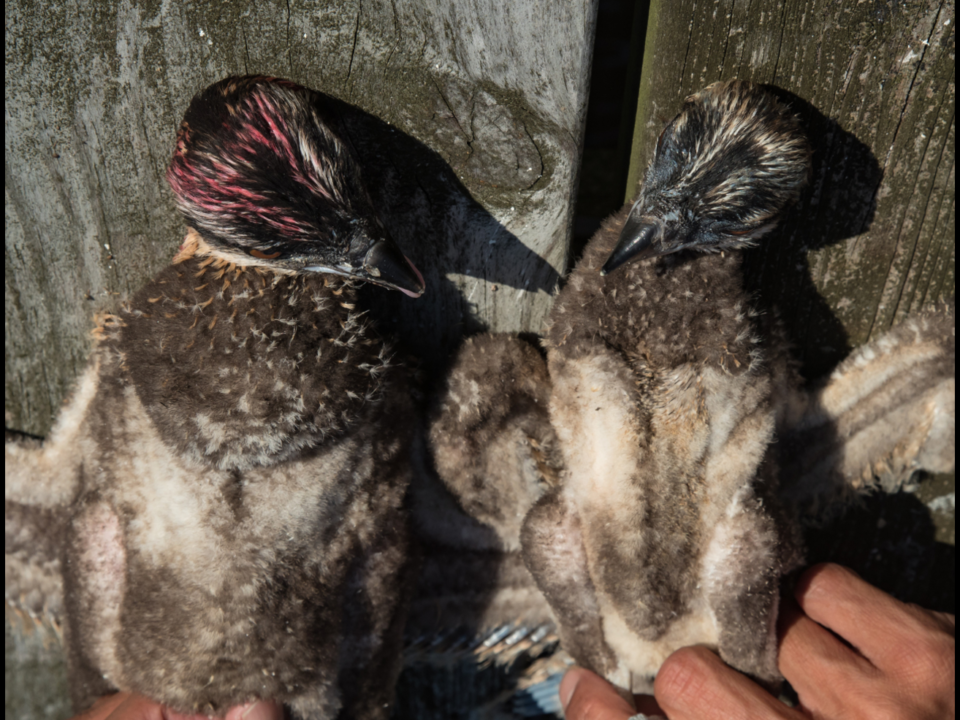End of an era: Metompkin peregrine tower removed after 25 years

Working for conservation and management of the Eastern black rail
September 8, 2009Azalea on the Move Again
September 10, 2009
Written by Bryan Watts
September 9, 2009

Bryan Watts and Shawn Padgett band peregrine chicks on the Metompkin tower. Photo by Bart Paxton.
One of the key strategies to recover peregrine falcons in eastern North America was the release of captive-reared birds into the mid-Atlantic Coastal Plain by a management technique known as “hacking” [learn about hacking at VaFalcons site]. In order to accomplish this objective, a large number of towers were constructed within the region between 1975 and 1985. These towers were initially used for the release of young falcons but as these birds returned and formed pairs they became breeding sites. Since the mid-1980s the breeding population along the seaside of the Delmarva Peninsula has grown and become one of the densest breeding sites on the continent.

Shawn Padgett (front), Bryan Watts (middle), and Mitchell Byrd (back) fit a young peregrine with a satellite transmitter in 2003. Photo by Bart Paxton.
The Delmarva (Delaware-Maryland-Virginia peninsula) seaside is an important site with international status for breeding, migrating, and wintering water birds. The fact that many of these species are declining and of high conservation concern has lead to an ongoing evaluation of tradeoffs between waterbird conservation and peregrine recovery within this location [link to this issue’s story, Conservation Conflicts: Peregrine falcons and Red Knots]. Because of its location relative to important shorebird stopover areas and significant breeding areas for piping plovers and American oystercatchers, the Metompkin tower is of particular concern. In January of 2010, a joint decision was made by The Center for Conservation Biology (CCB), The Nature Conservancy (TNC), and the state of Virginia to remove the Metompkin tower.
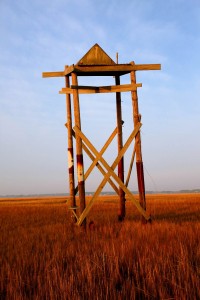
Metompkin Tower on the morning of January 16, 2010. Photo by Bryan Watts.
The Metompkin Tower was constructed in 1983, and in 1984 a single bird was present during the breeding season. In 1985, a pair was formed. Since that time, CCB and the state have managed the tower and 4 generations of biologists have worked with the peregrine falcons. Pairs nesting on the tower have produced 54 chicks. These chicks have dispersed to breed in many locations throughout the region.
On 16 January, Bryan Watts and Libby Mojica of CCB, Alex Wilke and Marcus Killmon of TNC, and Matt Ramah took boats out to the site to remove the tower. The tower was cut down and all parts were barged back to the mainland for disposal. Removal of the Metompkin tower follows the removal of the Chincoteague tower and the Fisherman Island box in the winter of 2008.
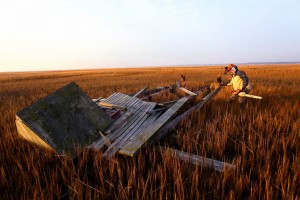
Metompkin peregrine tower removal: Marcus Killmon cuts the fallen Metompkin tower in pieces. Photo by Bryan Watts.
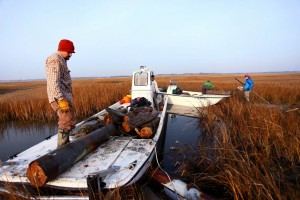
Metompkin peregrine tower removal: Matt Ramah loads and arranges pieces of the tower on the skiff. Marcus Killmon stands in the pilot house, as Alex Wilke (far right) and Libby Mojica load parts onto a second skiff. Photo by Bryan Watts.

Metompkin peregrine tower removal: The entire tower was taken back to the mainland by boat for disposal. Photo by Bryan Watts.
Related posts
A brood of osprey in Mobjack Bay showing a well-fed chick (left) and an emaciated chick (right). The chick on the right would die the following week due to starvation. Work in Mobjack Bay over a 40+ year period has shown that both reproductive rates and food delivery rates have declined dramatically. The decline in provisioning has led to an increase in brood reduction or chick loss due to starvation. Photo by Bryan Watts.
